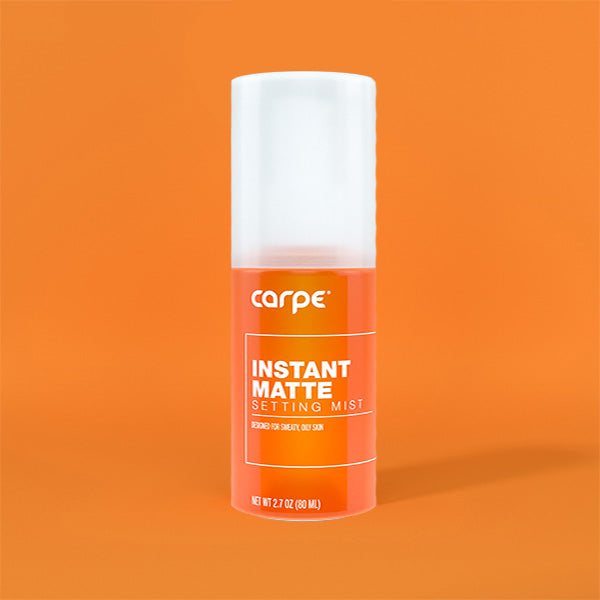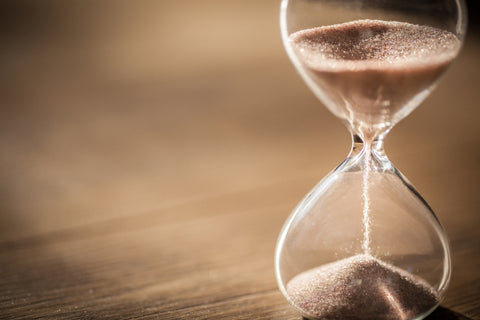Nearly 3% of the US population struggles with sweating that is so excessive it’s actually characterized as a medical disorder.[1] That’s a lot of people! Do you think you could be one of them? If you sweat frequently, especially from specific parts of your body, keep reading to find out more about this diaphoretic condition and what you can do to fix it.
The condition responsible for so many people’s excessive sweating is called primary focal hyperhidrosis (PFH). It might sound like a mouthful, but it describes a simple problem. People with the condition sweat too much. Most frequently they struggle with excessive sweating on their hands, feet, armpits, groin, and face.[1]
What is Primary Focal Hyperhidrosis?
Simply put, primary focal hyperhidrosis is a condition that causes the body to sweat in excess of what it needs to function properly. However, it is just one subtype of hyperhidrosis. There are several types of hyperhidrosis but the two most common types are primary focal hyperhidrosis and secondary generalized hyperhidrosis. An estimated 2.8% of the US population has primary focal hyperhidrosis, making it quite common. In fact, primary focal hyperhidrosis makes up 93% of all hyperhidrosis cases. Most of the time people are diagnosed with the primary focal type of hyperhidrosis when they meet the following criteria:
- They experience excessive sweating on specific parts of the body including the hands, feet, armpits, face and groin.
- Their sweating has no apparent cause.
- They have been experiencing excessive sweating for longer than 6 months.
- Their sweating occurs on both sides of their body.
- Sweating is excessive enough to interfere with their daily life.[1]
Primary focal hyperhidrosis has several characteristics that make it different from the other types of the condition. One of the most distinct features of PFH is that it typically begins in adolescents and lasts for a lifetime. The onset of the disease usually occurs between the ages of 14 and 25. There is some indication, however, that primary focal hyperhidrosis may get better with age, as most people over the age of 65 have significantly reduced symptoms. People with PFH experience excessive sweating on specific areas of their body which is why it is called focal hyperhidrosis. Sweating is most often seen on the armpits, hands, feet, and face. Excessive sweating can occur in other areas of the body but it is unusual. The sweating that occurs with PFH is bilateral, meaning it occurs on both sides of the body, and it dissipates at night. People with the condition have at least one episode of excessive sweating per week, often daily, and the sweating is so severe that it impairs daily activities. While hyperhidrosis is not dangerous, it can have a negative impact on a person’s quality of life.[1]
What Causes It and Who Gets It?
This may be frustrating to hear, but scientists are not entirely sure how and why people get primary focal hyperhidrosis. It is thought that hyperhidrosis is hereditary as it appears to run in families. Researchers think that PFH is an autosomal dominant disorder, meaning that a child only needs to inherit the gene from one parent in order to get the condition.
It is suspected that cases of focal hyperhidrosis are often underreported due to embarrassment and social stigma. Unfortunately, many people who have hyperhidrosis also have anxiety due to the stress the condition adds to their lives. People between the ages of 14 and 25 with a family history of hyperhidrosis are at the highest risk of developing the disorder.[1] If you feel like you might have primary focal hyperhidrosis, please don’t let embarrassment keep you from reaching out for help.
The physical cause of hyperhidrosis, like other aspects of the condition, is not yet well understood. The most popular theory posits that it is a result of an overactive sympathetic nervous system. The autonomic nervous system controls unconscious bodily functions like breathing, digestion, and heart rate. It is divided into two parts, the sympathetic and parasympathetic nervous systems. The sympathetic nervous system is the branch of the autonomic nervous system that is responsible for activating the body, like the “flight or flight” response when appropriate. Sweat glands are innervated by the sympathetic nervous system, so when it is overly excited, sweat glands become overactive and produce more sweat than they should. Most researchers tend to believe that hyperhidrosis occurs due to a problem somewhere in the nervous system, but it will take more time and research to find a definitive answer.[2]
Hyperhidrosis and Quality of Life
Regrettably, primary focal hyperhidrosis is known to negatively affect a person’s quality of life, especially when it is untreated. This is because it can be a socially stigmatizing condition that interferes with multiple facets of life. This is a big issue that doctors, companies like Carpe, and other organizations are working hard to fix.
One survey of the US population demonstrated that about 50% of the people with hyperhidrosis suffered from axillary sweating and a third of these people reported that their symptoms were barely tolerable or intolerable. The same study revealed that only 38% of the people with hyperhidrosis ever spoke to their doctor about treatment options. This demonstrates that even though hyperhidrosis greatly impacts a person’s quality of life many people are too embarrassed to speak about it with a medical professional. This is unfortunate because there are many treatment options that can improve patients quality of life.[1]
Hyperhidrosis impacts a person’s quality of life in different ways depending on which area of their body is affected. The areas of life that are most affected by hyperhidrosis in general include a person’s emotional well-being, interpersonal relationships, leisure activities, personal hygiene, work, and self-esteem. However, which part of a person’s life that’s affected depends on what parts of their body is affected by excessive sweating. For example, a person with hyperhidrosis that affects their hands may have difficulty with manual activities like writing, playing musical instruments, or opening door knobs because of how much sweat they are constantly producing. Someone with axillary hyperhidrosis may struggle with constantly staining their clothes and having to wash frequently.
These types of issues often cause people to have lower self-esteem and to feel socially isolated. On top of that, people with hyperhidrosis often develop anxiety as a result of how the condition affects their lifestyle. Many times anxiety worsens the symptoms of hyperhidrosis and it creates a negative cycle in which anxiety and sweating are constantly making the other symptoms worse.[1] If you feel that this describes your situation, there are treatments that can help you sweat less so that you don’t feel as emotionally compromised by your condition.
Children With Hyperhidrosis
Although hyperhidrosis usually begins at the end of childhood, it can affect younger children. Estimates show that about 1.6% of adolescents struggle with excessive sweating and that .6% of prepubertal children are affected by hyperhidrosis. Unfortunately, children with hyperhidrosis frequently develop psychological and social distress if they are left untreated. If hyperhidrosis is caught early and treated, then many of the negative effects of the condition can be avoided. This is why early detection and management is so critical for children living with hyperhidrosis. While some treatments options are not available to children, many are. These options include the use of antiperspirants, some oral medications, iontophoresis, botox injections, and certain lifestyle modifications.[1]
Treatment Options
Currently, there is no cure for hyperhidrosis. However, there are many effective options that people can use to manage their sweat. The treatment a patient receives depends on where their sweating is the worst. Here are the treatment options available for each body region affected by PFH:
- Treatments for axillary (armpit) hyperhidrosis:Over-the-counter and prescription antiperspirants, botox injections, local permanent surgical procedures, Qbrexza, oral medications, or a surgery called endoscopic thoracic sympathectomy.
- Treatments for sweaty hands:Antiperspirants, iontophoresis, oral medications, and botox injections. People with severe palmar (hand) hyperhidrosis can get a surgical procedure called endoscopic thoracic sympathectomy.
- Treatments for sweaty feet:Antiperspirants, iontophoresis, oral medications, and botox injections. There is a similar procedure for plantar (foot) hyperhidrosis called endoscopic thoracic sympathectomy but can be risky and most doctors don’t recommend it.
- Treatments for craniofacial hyperhidrosis:Antiperspirants, oral medications, botox injections, or possibly surgery.
Each treatment has its own risks and benefits. Antiperspirant use, for example, has very little risk compared to one of the more invasive procedures, like endoscopic thoracic sympathectomy. Surgery to correct excessive sweating can lead to the development of serious complications, like compensatory sweating, that might deter some patients from choosing it. This is why it is critical for patients to discuss their options with a doctor so that they can make the most informed decision about their medical treatment for their own individual circumstances. The solution that will work for you is highly individual and it will depend on your medical situation, personal preferences, and your doctor’s advice. With the right treatment most people see a significant improvement in the quality of life so it is worth it to try and figure out what works for you.[1]
The treatments discussed above are established therapies that have been around for a significant amount of time, but there are new treatments being developed every year. For example, in late 2018, a new product called Qbrexza came out. It is a wipe that uses topical Glycopyrronium Tosylate to prevent and lessen axillary sweating.[3] There are also different types of laser therapies being developed that may be able to stop sweat glands from producing excessive amounts of sweat.[1] As time goes on treatments will become more accessible for everyone, and hopefully, hyperhidrosis will have a less profound impact on those who have to deal with it.
Sources
- Pariser, D. M. (2014). Hyperhidrosis (4th ed., Vol. 32). Philadelphia, PA: Elsevier. Retrieved from https://www.elsevier.com/books/hyperhidrosis-an-issue-of-dermatologic-clinics/pariser/978-0-323-32607-0
- Huddle, J. R. (2014). Hyperhidrosis: Causes, Treatment Options and Outcomes. New York, NY: Nova Science. Retrieved from https://www.bookdepository.com/Hyperhidrosis-Janine-R-Huddle/9781633215160
- Qbrexza. (2018). Retrieved September 26, 2018, from https://dermira.com/our-medicines/>https://dermira.com/our-medicines/>https://dermira.com/our-medicines/>https://dermira.com/our-medicines/>https://dermira.com/our-medicines/>https://dermira.com/our-medicines/>https://dermira.com/our-medicines/






16790753702383.jpg?v=1679075372)

16790746985853.jpg?v=1679074700)


16790757289763.jpg?v=1679075731)












